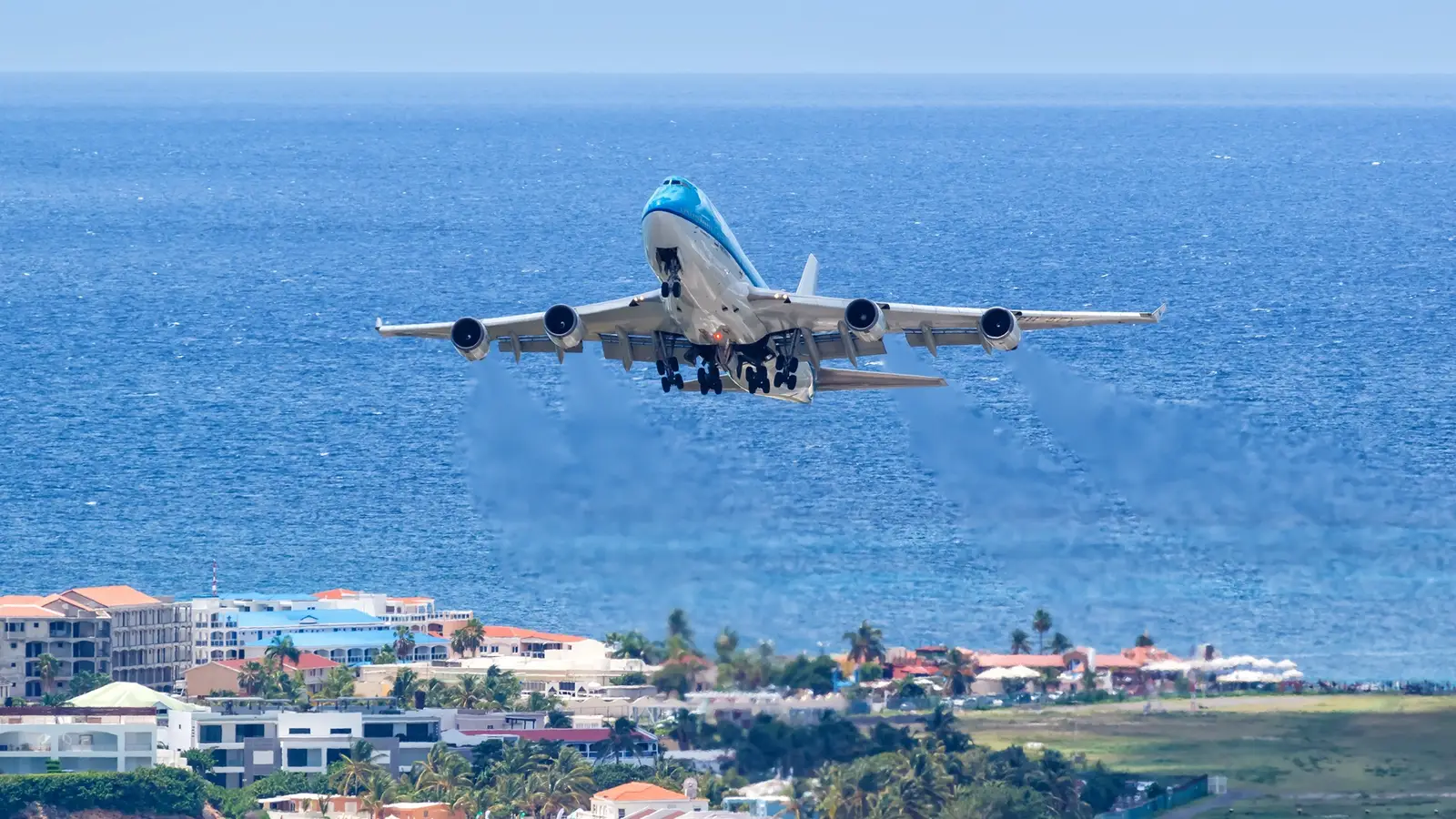
The grace and power of jetliners with four roaring engines are icons of our world’s advances in civil aviation since the beginning of the Jet Age. Soaring at 600 miles per hour and faster, quadjets redefined glamour, broke down range barriers, and even reduced airfare before twinjets took center stage. Their oversized airframes demanded that airports extend runways, authorities expand their rulebooks – to put it simply, quadjets raised the bar of air travel like nothing before.
Simple Flying pays homage to the five machines that best exemplify that legacy in this roundup. Each jet aircraft embodies a different chapter of the same epic of flight. We’ll look at how these icons came to be, what made them groundbreaking, and why their legacy can still be seen today in everything from art and entertainment to airport ramps and modern jet cabins.
5 Boeing 707
The First Of Its Kind
The Boeing 707 was the first commercially successful jetliner in history and the machine that hurled air travel into the Jet Age. The four-engine narrowbody with 35-degree swept wings, sported Pratt & Whitney JT3C turbojets. The prototype “Dash 80’s” first flight took place on July 15, 1954, and launched the transformation of Boeing from a military contractor into the leading airliner manufacturer in the world.
On October 26, 1958, Pan American took delivery of the first 707. Its jets cut the New York to Paris travel time in half to eight hours. Airlines rushed to order the long-range 707-320, short-field 720, and combination carrier 707-320C. With 140–180 seats and a cruise speed of close to 600 mph, the 707 attracted millions of new passengers. It transformed intercontinental travel from a luxury to a mass market by offering vibration-free comfort, high utilization, and unparalleled seat-mile economics.
Boeing produced 1,010 of the 707 by the end of 1979. By that time every major airport had installed jetways, widened taxiways, and lengthened runways to accommodate its weight and speed. The jet’s overwhelming success secured Pratt & Whitney’s place, pushed Douglas and Convair into competing programs, and created the standard design of swept wings, podded engines, and fuselage shapes as we know them now. It gave rise to military variants like a tanker, reconnaissance plane, and flying command post that are still in use today. Even though widebody twins have overtaken quadjets, the Boeing 707 is still the jetliner that made international air travel as fast as it is today.
4 Airbus A340
The First Four-Engine Airbus
A turning point for the fledgling Airbus came in 1993 when the four-engine A340 went into service with Lufthansa. Prior to that, Boeing’s 747 and the McDonnell Douglas MD-11 were the only aircraft capable of competing in the lucrative ultra-long-haul market. Airbus had relied on the twin-engine A300 and A310 to break into short- and medium-haul markets. Airbus’ first quadjet provides airlines with a new intercontinental platform. The A340, which was designed concurrently with the nearly identical twin-engine A330 and allowed Airbus to expand its family concept into the widebody market by utilizing shared cockpits, parts, and training.
The most significant contribution of the aircraft was breaking up the monopoly on nonstop travel between distant destinations. While the stretched -600 briefly held the title of longest airliner in the world, the early -300 and -200 versions gave carriers like Air France, South African Airways, and Cathay Pacific another option to connect Paris to Tahiti, Johannesburg, and New York, or Hong Kong and Toronto.
Airbus brought a new choice to a limited market segment and offered fleet flexibility, the plane was made with new composites, and shared type rating with the A320. The twin-aisle cabin and smaller powerplants provided passengers with a competitive alternative to aging first and second-generation 747s.
The A340 demonstrated that Airbus could compete at the top end of the market. Its 377-unit production run helped fund new programs and influenced the design of the A380’s systems, as well as solidifying Airbus’ position as Boeing’s widebody rival.
3 Concorde
Supersonic Transport With A Side Of Caviar
The Concorde redefined the boundaries of civil aviation when it started service with British Airways and Air France in 1976. The supersonic transport (SST) was powered by four Rolls-Royce Olympus 593 turbojets. It cut the London to New York flight time to just over three hours, cruising at Mach 2 and 60,000 feet. For a select few, Concorde demonstrated that regular supersonic travel was possible for civilian flyers.
Concorde introduced high-temperature aluminum alloys, electronic fuel transfer for in-flight center-of-gravity adjustments, a droop nose for improved landing visibility, and the first fly-by-wire controls. The jet became a sort of aerial laboratory whose technological advancements aided other research programs in both supersonic flight and subsonic airliner development.
Airlines and government agencies studied the firsthand reality of operations above the tropopause layer of the atmosphere and sonic-boom effects. Air traffic controllers developed specialized supersonic corridors and new long-range navigation techniques just for Concorde.
Concorde’s commercial failures were just as significant as its achievements. Viability was limited to a small transatlantic niche due to high fuel consumption, limited overland rights, and expensive fares. Only twenty airframes went into operation. As a result, the program became a case study of the economic fragility of fuel-hungry, exotic, luxury aircraft.
Despite its shortcomings, its glitz produced enormous marketing value. The small fleet foreshadowed today’s ultra-premium cabins, created the modern flagship-product mentality, and projected national prestige. Its retirement in 2003 left a void in the air travel market that multiple startups have sought to fill since. The latest is Boom Overture, which will not be as fast but promises to be quiet enough to succeed.
2 Airbus A380
One Superjumbo To Rule Them
The wide-body competition intensified in 2007 when Airbus’s A380, the first full-length double-deck airliner, went into service with Singapore Airlines. The quadjet superjumbo was designed in the 1990s to compete with Boeing’s 747 at slot-limited hubs around the world. Its colossal hull can accommodate as many as 800 passengers in high-density configurations. Due to its size, airports from Heathrow to Changi had to add dual-level jetbridges, widen taxiways, and reinforce runways.
Technologically, the Airbus A380 introduced a composite-metallic hybrid wing, advanced fly-by-wire with side-sticks, and cabin pressurization at lower altitude for greater comfort. It validated fully integrated avionics and provided sufficient electrical power to support lower-deck galleys, showers, and bar lounges. For airlines like Emirates, which bought more than 120 of them, the jet fed a model linking almost every continent through Dubai at competitive seat-mile costs.
Only 251 A380s were constructed before the line closed in 2021. The Covid-19 pandemic and the efficiency of new ETOPS-cleared twinjets like the Boeing 787 as well as Airbus’ own A350 undercut demand. The A380 remains the pinnacle of jumbo jet ambition. The resurgence of a cargo-rich, high-density air travel market after COVID highlights the ongoing need for very large aircraft in international fleets.
1 Boeing 747
The Queen Of The Skies
When Boeing’s 747-100 entered service with Pan Am on January 22, 1970, it inaugurated the age of the “jumbo jet” and redefined mass air travel. The 350-seat widebody doubled the capacity of the 707 while offering comparable fares. The distinctive hump placed the cockpit above the main deck, enabling a hinged nose for cargo versions and giving the new flagship an instantly recognizable silhouette as well as a unique lounge on the upper deck.
Most importantly, the 747 accelerated a new, globalized economy by making long-haul travel accessible and scalable. Its inertial navigation, redundant hydraulics, and triple-slotted flaps raised the standard for safety. Its high-bypass Pratt & Whitney JT9D engines were pioneers of the turbofan designs that make today’s twinjet efficiency possible.
The modern hub-and-spoke infrastructure that many airlines share was supported by upgrades to airport infrastructure around which. The “Queen of the skies,” as the 747 came to be called, demanded wider taxiways, more jet bridges, and baggage systems with the capacity for previously unheard-of luggage volume.
Later 747 variants, from the long-range -400 to the freighter-optimized -8F, continued to underscore airline economics, headline charter travel, and serve as the backbone of international logistics. Over the course of five decades, Boeing made 1,574 deliveries before the assembly line was shuttered in 2023.
The might 747 flew as Air Force One, transported NASA’s space shuttles, and evacuated Saigon. It even outlasted its competitor, the A380, despite first rolling off the line decades before it. The 747 established the standard for high-capacity intercontinental aviation and demonstrated that daring engineering can open up new markets, even though twinjets may now rule the skies. Although its last delivery in 2023 marked the end of an era, its legacy will never fade.



